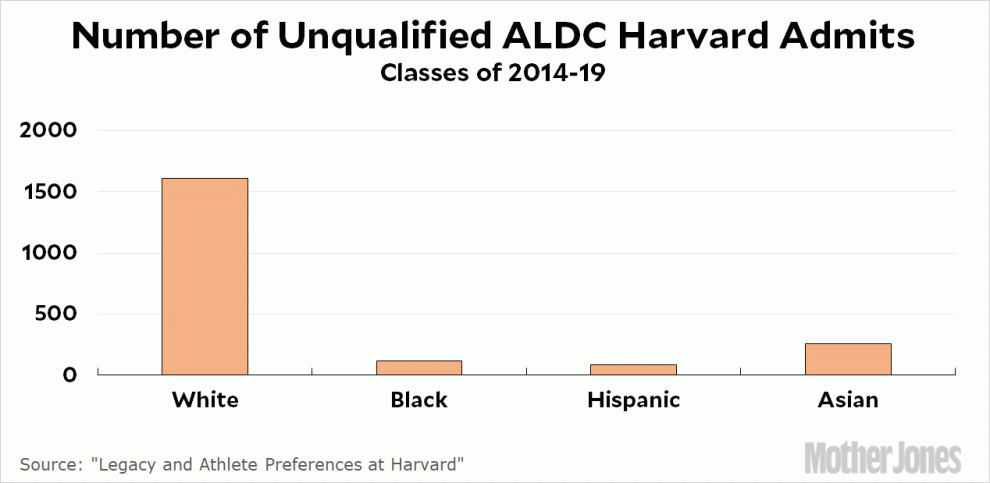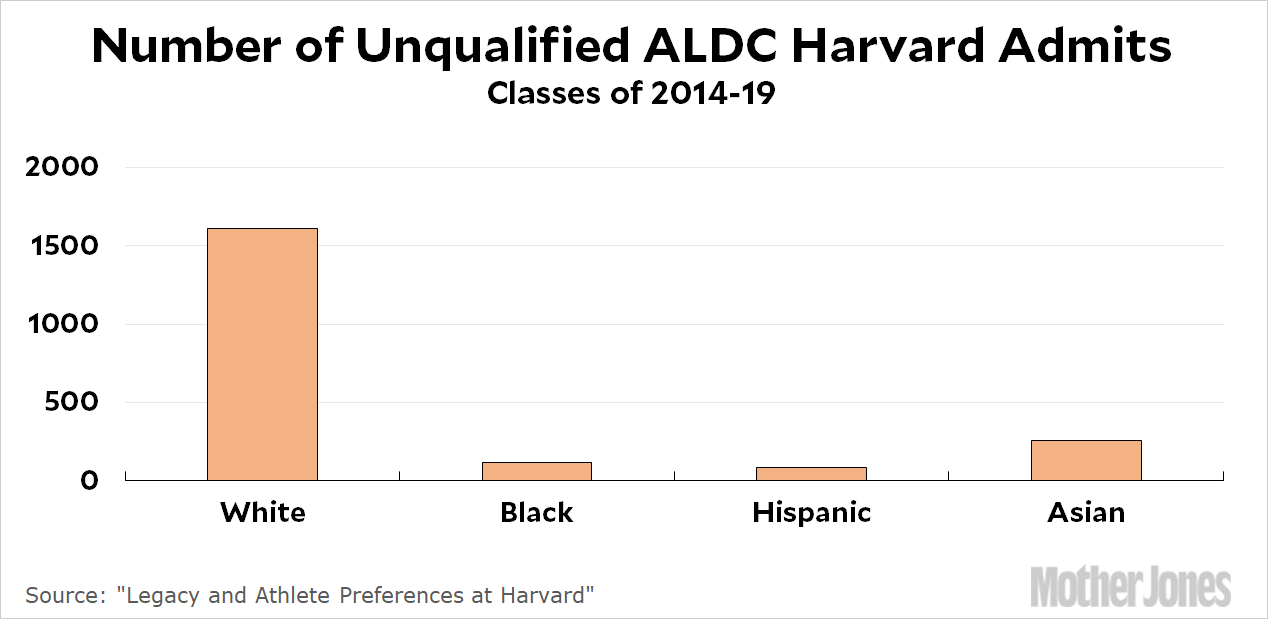
A few days ago a team of researchers published a paper about Harvard’s admission policies. In particular, they looked at affirmative action for four different categories of freshman admits: athletes, legacies, “dean’s interest,” and children of faculty. These are referred to as ALDC admits.
The question at hand is how many applicants who were otherwise unqualified were admitted because of their ALDC status. This is usually shown as a percentage or a distribution, but I think it’s useful to show it as a raw number too. For those who want to follow along, here’s an example for white applicants taken from Table 10 of the paper:
- Total ALDC admits: 2,179
- Percent who were otherwise qualified: 26%
- Number of unqualified applicants who were admitted as ALDC: 1,612
Here are the numbers for all applicants:

It turns out that more than 40 percent of Harvard’s incoming white students from the classes of 2014-19 benefited from their ALDC status compared to about 15 percent for other ethnic groups. As a result, 1,612 otherwise unqualified whites were admitted, triple the number of every other group combined.
Keep this in mind the next time you hear someone complain about affirmative action for black or Hispanic students crowding out better qualified white students. Whatever sort of affirmative action Harvard may have for marginalized groups, the raw numbers come nowhere even close to the preferences they already give to white applicants. And needless to say, there’s no reason to think that Harvard is unique in this regard. This is standard stuff at elite universities across the country. If there’s anyone being screwed by affirmative action, it sure isn’t white kids.
UPDATE: A couple of people have pointed out that I may have left the wrong impression with this post. I didn’t mean to imply that if ALDC preferences were eliminated Harvard would have admitted 1,612 fewer white kids. That’s not the case, and the paper says so. Most of those spots would simply have gone to different, less privileged white kids.
I was just trying to make a narrower point: There are a whole lot of white applicants who benefit from the ALDC preference system, far more than there are minority kids who benefit from affirmative action.
I don’t know if the Harvard data we have would tell us this, but here’s what I’d be interested in: if all the ALDC and racial preferences were removed and replaced with a class-preference system of affirmative action, what would Harvard ‘s entering class look like? It would certainly be less elite, but what would be the racial composition?















